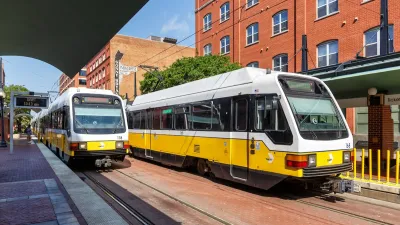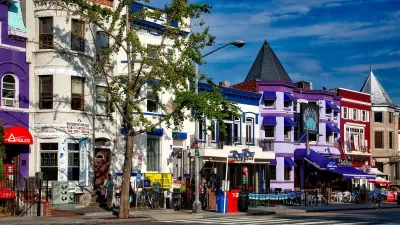Transit should make people's lives better, with density a key component of successful systems.

In an excerpt from his new book “Trains, Buses, People: An Opinionated Atlas of US Transit,” Christof Spieler reflects on what makes transit good, how it should improve people’s lives, and the role of density in developing successful transit systems.
Spieler says he uses transit in Houston and it works for him because he has easy access, service is frequent and efficient, and it takes him where he needs to go. He also points to a broader perspective on what goes into an effective transit system:
We need to talk about what matters—to focus on the quality of service, not the technology that delivers it; to talk about all kinds of transit riders, not just about a narrow target market; to understand that the transit experience depends on buildings and streets and sidewalks as much as it does on stations and trains; and, above all, to talk about getting transit in the right places.
Density is a key factor for transit, says Spieler. “The performance of a rail or BRT line is directly related to the surrounding densities. For example, the most successful light-rail systems in the United States—San Francisco, Boston, Philadelphia, Seattle, Newark, Jersey City, Buffalo, and Houston—serve large areas of over 10,000 people per square mile.”
He says locating transit in densely populated areas is crucial, even while acknowledging the challenges in doing so in the United States — shifts in density, misperceptions about which areas are actually dense, and the difficulties involved in building transit in dense places.
Spiegler also encourages increasing population density around transit:
Almost every transit line has room for new development along it: vacant lots, surface parking, aging single-story retail, underused industrial tracts. Even areas that already have density can be densified, and often the market supports dense new development in areas that already have an established residential market better than in relatively undeveloped areas.
He argues that transit-oriented development does well in the real estate market and urges cities to ease up on land use and zoning regulations that hinder this development and the density that comes with it. Rather, he says, cities should focus on policies that promote affordable housing in locations near transit.
FULL STORY: Excerpt: Many Cities Have Transit. How Many Have Good Transit?

Planetizen Federal Action Tracker
A weekly monitor of how Trump’s orders and actions are impacting planners and planning in America.

Restaurant Patios Were a Pandemic Win — Why Were They so Hard to Keep?
Social distancing requirements and changes in travel patterns prompted cities to pilot new uses for street and sidewalk space. Then it got complicated.

Map: Where Senate Republicans Want to Sell Your Public Lands
For public land advocates, the Senate Republicans’ proposal to sell millions of acres of public land in the West is “the biggest fight of their careers.”

Maui's Vacation Rental Debate Turns Ugly
Verbal attacks, misinformation campaigns and fistfights plague a high-stakes debate to convert thousands of vacation rentals into long-term housing.

San Francisco Suspends Traffic Calming Amidst Record Deaths
Citing “a challenging fiscal landscape,” the city will cease the program on the heels of 42 traffic deaths, including 24 pedestrians.

California Homeless Arrests, Citations Spike After Ruling
An investigation reveals that anti-homeless actions increased up to 500% after Grants Pass v. Johnson — even in cities claiming no policy change.
Urban Design for Planners 1: Software Tools
This six-course series explores essential urban design concepts using open source software and equips planners with the tools they need to participate fully in the urban design process.
Planning for Universal Design
Learn the tools for implementing Universal Design in planning regulations.
Heyer Gruel & Associates PA
JM Goldson LLC
Custer County Colorado
City of Camden Redevelopment Agency
City of Astoria
Transportation Research & Education Center (TREC) at Portland State University
Camden Redevelopment Agency
City of Claremont
Municipality of Princeton (NJ)





























